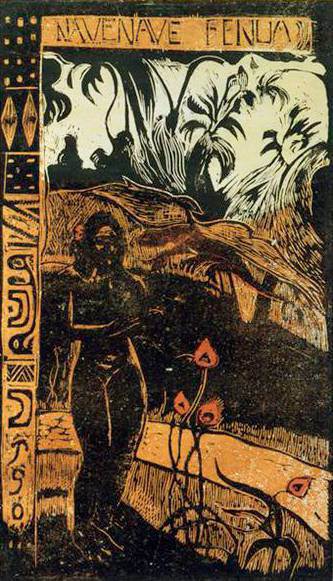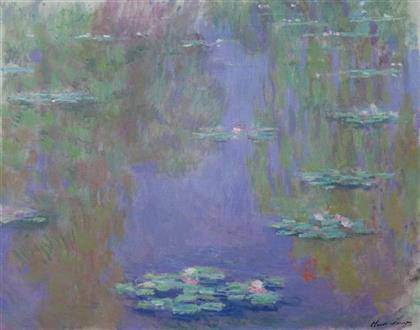
Paul Gauguin
Nave Nave Fenua (Magnificent Land), 1893–1894
Noa Noa-Suite
Woodcut, image: 35.6 x 20.7 cm
Private collection
Paul Gauguin. The Prints – at Kunsthaus Zürich From 28 September 2012 to 20 January 2013, the Kunsthaus Zürich exhibits over 50 prints by the French painter Paul Gauguin (1848-1903).]]>
Source: Kunsthaus Zürich
Paul Gauguin is one of the most famous painters of the early modern era, yet it is impossible to comprehend him as an artist without an appreciation of his graphic output. Gauguin’s woodcuts and zincographs (lithographs on zinc plates rather than stone) broke new ground artistically and tell us much about the character of the man who created them.
Travels to Brittany and the South Seas
A first, important series of prints in black on bright yellow paper was created in 1889. Known as the Volpini suite, they draw on the artistic accomplishments of his time spent in Brittany and on Martinique, and already reflect his increasing fascination with exotic, far-away places. The initial high point of Gauguin’s graphic production came during and after his first journey to the South Seas in 1891 and 1892, with the complex Noa Noa series – one of the most fascinating creations of modern art.
A mirror of a restless soul
Gauguin’s graphic production grew during his lengthy periods of illness, and in 1895, when he returned to Tahiti, it became the focal point of his artistic creation. An examination of the woodcuts shows Gauguin’s art to be as radical as it is sensitive, and reveals the drama of a complex personality wrestling with doubts, longings and fears. Here, everyday life, exotic myths, Catholic faith and fear of ancestors and demons combine in a heady mix that demands to be explored in greater detail. Gauguin’s prints are a mirror in which an eternally questing artist sees himself, seeks affirmation, experiences both failure and success.
Enigmatic depth and strange intensity of colour
An initial examination of the prints appears to confirm the cliché of the ‘wild’ artist: for in these works, Gauguin operated outside the conventions of commercial graphic art. He printed many of them himself. Since he had not mastered the highly specialized techniques involved, they seem clumsy at first glance. Where a number of plates cut and coloured in different ways were printed one over the other, the contours begin to blur; yet in so doing they give rise to a particular and enigmatic sense of depth and a strange intensity of colour. There are countless variations, because Gauguin experimented incessantly with paper, paint and printing technique; to this day, versions are still emerging of which researchers had previously been unaware. Each piece is a one-off; it stands in its own right and is unique. Opportunities to study these works are equally rare. There are no plans to exhibit them anywhere else in Europe in the foreseeable future.
Related content
Gauguin: Maker of Myth – the Art of Paul Gauguin shows in full bloom in Washington (exhibition, 2011)
Follow us on:


